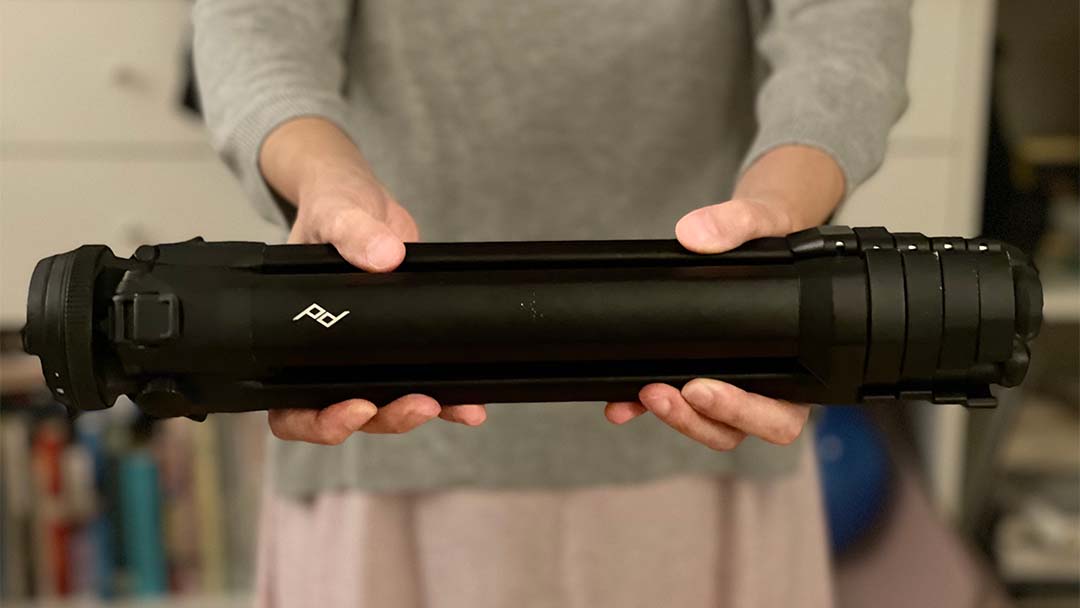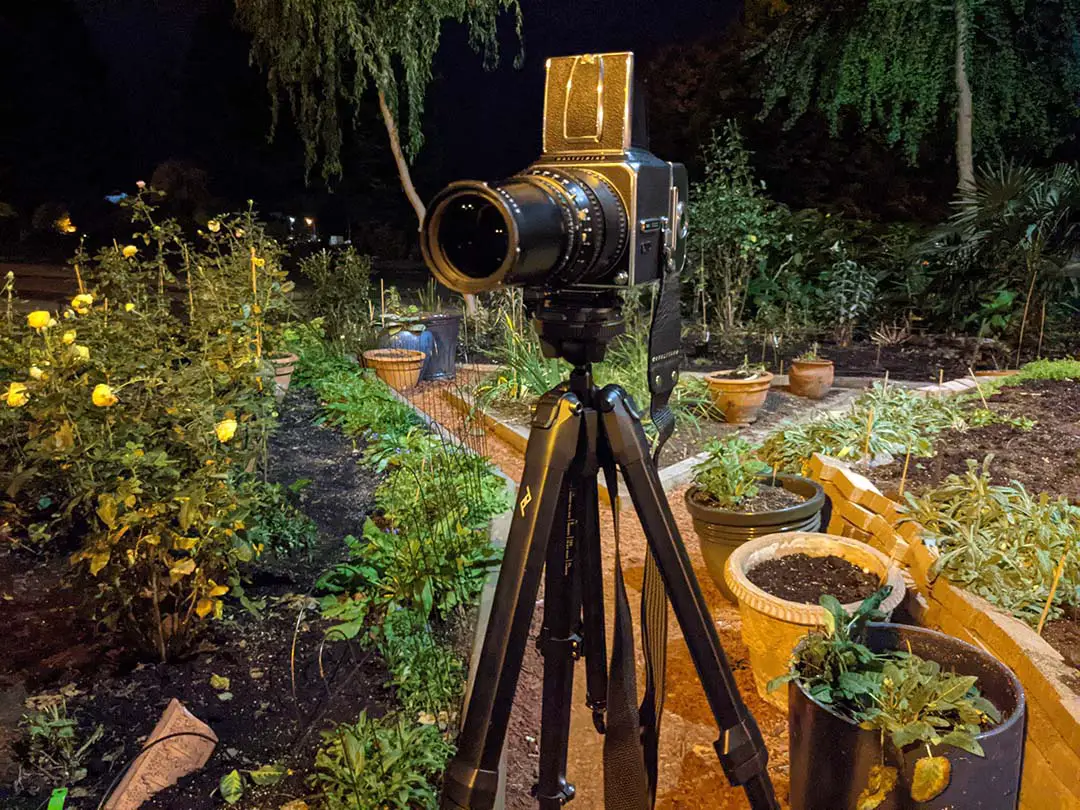One of the least sexy purchases I made in 2021 was a tripod. A tripod is not usually anywhere near as exciting as a Hasselblad, a new computer, or even a roll of Cinestill 800t, but it’s likely the most important part of every photographer’s kit. But the Peak Design Travel Tripod is somehow so much different.
I wanted a tripod that could do the impossible — be lightweight, sturdy, and efficient. Naturally, after an exhausting couple of hours looking at Benro and Manfrotto with the sales tech and not finding anything without some unfixable flaw, I ended up going a little over budget and picked up the new Peak Design aluminum tripod.
I’ve been using this tripod for a little over 6 months now, and have really put it through the paces. Here’s my review of this travel tripod.
4 out of 5 stars: the Peak Design travel tripod is a cool device that feels good on your bag in the same way a new iPhone feels good in your pocket. Overall, this tripod is great for hiking and flying but it doesn’t allow the user to change heads, and won’t keep a camera perfectly steady during long exposures.
It does a little bit of everything: this tripod has a removable center column for shooting low to the ground, a tripod holder, a tool kit, a cellphone holder, and a hood. The tripod uses a ball head with a quick and secure locking mechanism. It comes with a Peak Design plate but can also use standard Arca Swiss plates by removing two screws on top.
The tripod is slated to hold 20 lbs (9 kg), while only weighing 3 lbs (1.5 kg) and folding down to a size smaller than the average camera backpack. All in all, it’s a really cool piece of kit.
Find the Peak Design Tripod on the company’s website for the best price.

What does the Peak Design tripod do that others don’t?
Peak Design has honestly revolutionized tripods with this design. Benro and Manfrotto have been making the same uninteresting tripod designs for as long as I can remember. But Peak design has come around and made the single most versatile tripod in the smallest package imaginable.
The tripod folds down to such a small size where it is almost unnoticeable. And the legs use the classic latch design, making it quick and easy to set up. Also, stowing a clip-on cellphone attachment in the center column is nothing short of genius.
All in all, there’s a lot to like about the Peak Design tripod — it has some good tricks up its sleeve. But it does cost nearly twice as much as a standard tripod.
The aluminum version is also incredibly lightweight. Compared to a Hasselblad 500c, or Eos 630 with Sigma Art lenses, I will barely notice it on my way up the side of the mountain or when riding a bike across the city. There are no more questions about if the tripod is going to weigh too much to be worth it, which is a pretty incredible change in my shooting behavior.
The tripod is also small enough that I’m never worried about hitting anyone or having to pay for a new paint job in my tight entranceway every time I leave home. And it’s a sleek piece of metal that goes almost completely unnoticed. Not once have the clasps gotten caught on my bag or in my clothing, and it does not shout to the world that I am a photographer with a ton of easily resellable, expensive gear in my bag.
These little benefits go a really long way to making this one of my favorite pieces of kit.

What are the downsides of the Peak Design tripod?
To make a tripod this compact and beautiful, some corners had to be cut. Remember when top-end cellphones and MacBook pros stopped coming with headphone jacks and usb ports? Well, the Peak Design tripod sacrificed sturdiness for its mindbending form.
The Peak Design tripod claims to be able to hold nearly twice as much weight as the average tripod, and that might be true. But when there is some visible bending when the legs are fully extended, and it really doesn’t take much to feel some motion in the tripod when pressing the shutter.
You can get around this flaw by using a cable release and not fully extending the legs. But I’m a giant, I’m getting old, and it’s not always comfortable to tower over a tripod with my back hunched awkwardly over the camera. Thankfully the Hasselblad 500C has a waist-level viewfinder so I don’t 100% look like a chump.
And to be fair, the problem of sturdiness is the same with every brand. The more leg sections a tripod has, the thinner they have to manufacture them, the less sturdy they will be. To overcome that problem, I always extend the legs from the top sections first, only using the bottom section if I really need it for the composition.
The downsides of the Peak Design tripod head
The next downside is that the tripod only comes with a ball head. To use other head types, you’ll need to purchase an additional adapter. Luckily they are fairly cheap, but it’s an additional expense on top of what is already a pricey tripod.
Ball heads are normal for beginner tripods because they’re flexible and easy to use. But I can never get them perfectly straight. The tripod head does have a bubble level, but almost all of my cameras will cover it, rendering it essentially useless.
Even if you straighten it before putting the camera on, you are inevitably going to have to make some kind of adjustments that will require you to loosen the head and recompose. Find something straight, and spend time to line it up just right.
Ball heads are also not great for panoramas. If you are going to attempt to make a panorama with this tripod, be sure to leave a good amount of overlap between photos so that Lightroom or PTGui will be able to stitch them together without leaving spaces in the frame.
And my final gripe: I lost the Allen key tool within the first 5 days of owning this tripod. Holding them on the outside of your tripod looks slick, but the magnets are far too weak to hold it steady. If anyone at Peak Design reads this, please change that.
Is the Peak Design tripod worth it?
The Peak Design tripod is incredible, and it’s built with some ingenious tech, but is it worth almost double the cost of the average Manfrotto?
If you are traveling frequently, then this is hands down the best tripod for you. No other tripod is this smooth and well designed. There are some quirks to it, like keeping it at a lower level and storing the Allen keys in your bag or keychain instead of on the legs.
But all in all, I am very impressed by this tripod. I have carried it to the tops of some mountains around the Pacific Northwest, and it has not let me down. I don’t expect that it will be the sturdiest tripod in the world, but you can adapt your techniques when you know that.
For film photography, this tripod has been a ton of fun to work with. I’ve also used it at weddings, where the design has made working with it an easy and fun task.
After using this tripod for the last three months, I can say that I would recommend this tripod to anyone who needs a tripod that does the job without getting in the way. Over time I will be getting the adapter to use a different pan and tilt tripod head, but in the meantime, the default option is sufficient.
The aluminum version is enough, but if you have the budget and really want to save some extra weight, there’s no better option than going for Carbon Fiber.

A work around to using a camera with an Arca Plate on the bottom is to put Peak Design’s quick connect plate on the old ball head you are no longer using with your old tripod. I don’t often do it but it works.